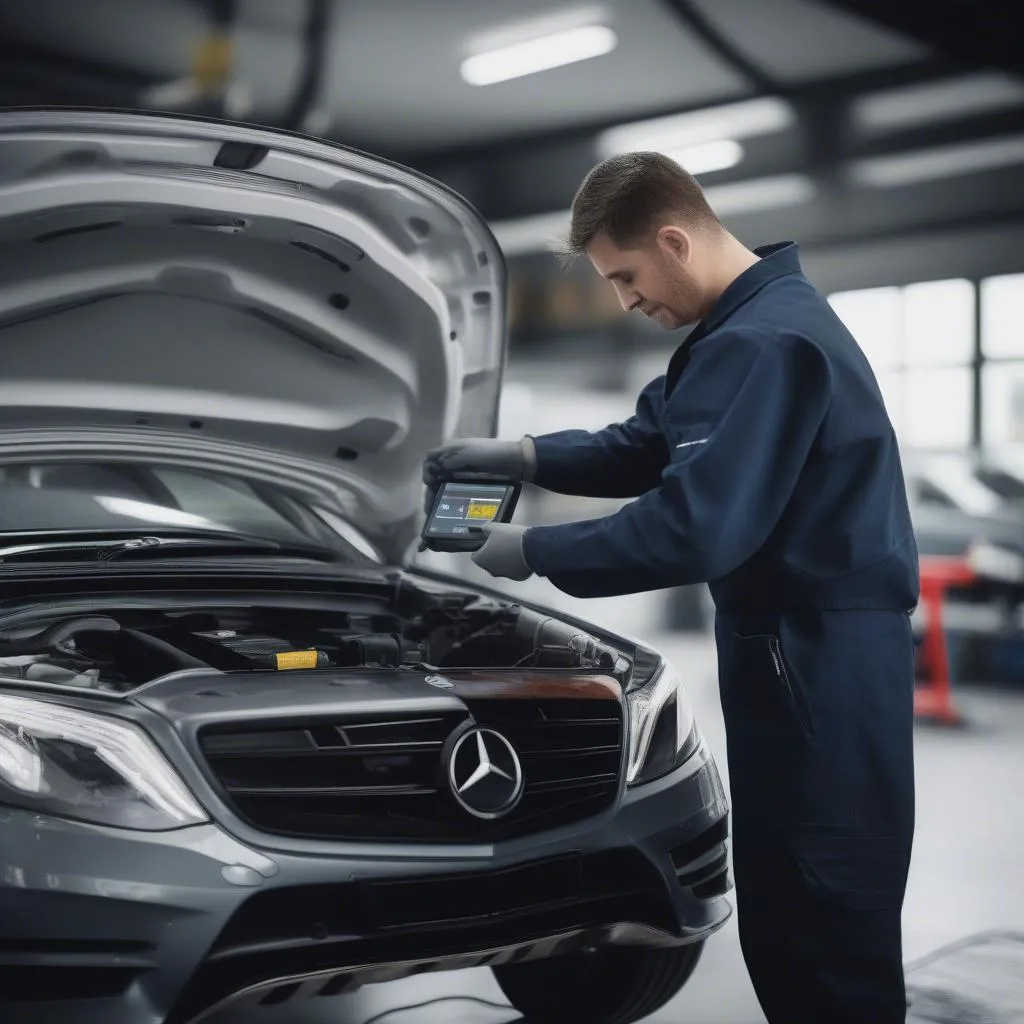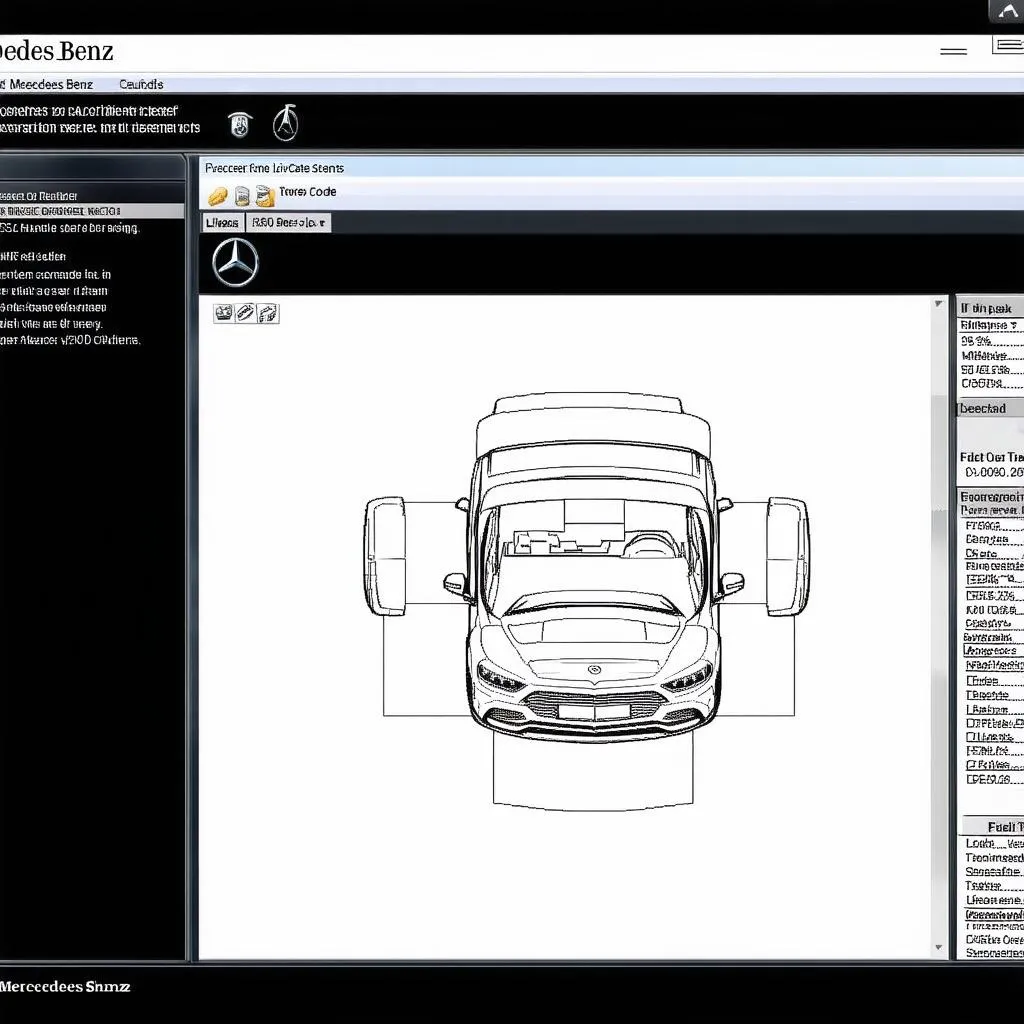Is your Mercedes C240 acting up and throwing a BAS light on your dashboard? Don’t panic! The Brake Assist System (BAS) is a crucial safety feature in your Mercedes, and addressing the issue promptly is essential. This guide will walk you through the potential causes, symptoms, and fixes for a malfunctioning BAS in your 2001 Mercedes C240.
Understanding the BAS Light in Your Mercedes
The BAS light, when illuminated, signals a potential issue with your car’s Brake Assist System. This system is designed to provide maximum braking power in emergency situations, shortening your stopping distance considerably.
What Causes a BAS Light to Come On?
Several culprits could be triggering the BAS light in your 2001 C240. Here are some of the most common:
- Brake Light Switch Malfunction: A faulty brake light switch is often the primary cause. This switch signals to the BAS when you’re braking.
- Low Brake Fluid: Adequate brake fluid is essential for the BAS to function correctly. A leak or low fluid level can trigger the light.
- Wheel Speed Sensor Issues: The BAS relies on input from the wheel speed sensors. A malfunctioning sensor can disrupt the system.
- ABS Control Module Problems: In some cases, the issue may stem from the ABS control module, which works in conjunction with the BAS.
Diagnosing the Problem
Identifying the root cause requires a bit of detective work:
- Check Your Brake Lights: Start with the simplest check – are your brake lights working? If not, the brake light switch is a likely culprit.
- Inspect Brake Fluid Levels: Open the hood and check the brake fluid reservoir. Low fluid levels are a clear indication of a problem.
- Utilize a Diagnostic Scanner: For a more in-depth diagnosis, a diagnostic scanner, like those offered by CARDIAGTECH, can read error codes stored in your car’s computer, pinpointing the issue more accurately.
 Checking Brake Fluid Level
Checking Brake Fluid Level
Gathering Your Tools and Equipment
Before diving into any repairs, assemble the following:
- Diagnostic Scanner: Essential for reading and understanding error codes.
- New Brake Light Switch (if necessary): A common and inexpensive fix.
- Brake Fluid (DOT 4): Top up or replace brake fluid as needed.
- Basic Hand Tools: Wrenches, screwdrivers, etc.
How to Fix a BAS Light
Note: The following steps provide a general guide. Always refer to your vehicle’s repair manual for specific instructions.
-
Replace the Brake Light Switch: This is usually a straightforward process involving locating the switch above the brake pedal, disconnecting the electrical connector, and installing the new switch.
-
Address Brake Fluid Issues: If low fluid is the problem, carefully add the correct type of brake fluid (DOT 4 for most Mercedes models) to the reservoir. If you suspect a leak, have a professional mechanic inspect and repair the brake system.
-
Wheel Speed Sensors and ABS Module: Issues with these components often require specialized knowledge and tools. Consider seeking help from a qualified mechanic for diagnosis and repair.
 Car Diagnostic Scan
Car Diagnostic Scan
Frequently Asked Questions
Q: Can I still drive my car with the BAS light on?
A: While you might still have regular braking functionality, the BAS, which provides additional power during hard braking, might not engage. This poses a safety risk, especially in emergency situations. It’s best to address the issue promptly.
Q: How much does it cost to fix a BAS light on a Mercedes C240?
A: The cost can range significantly depending on the underlying cause. A simple brake light switch replacement might cost under $50, while a faulty ABS control module could cost several hundred dollars or more.
Q: “My BAS light came on after a jump start. What could be the issue?”
A: Automotive electronics can sometimes be sensitive to voltage fluctuations. It’s possible the jump start caused a temporary glitch. Try disconnecting the battery for a few minutes to reset the system. If the light persists, further diagnosis might be necessary.
Conclusion
“Addressing a BAS light in your 2001 Mercedes C240 is crucial for your safety on the road,” advises Michael Thompson, author of “Mercedes-Benz: The Complete Owner’s Guide.” By understanding the potential causes and utilizing a systematic approach, you can resolve the issue effectively. While some fixes are simple enough for DIY enthusiasts, others necessitate the expertise of a qualified mechanic. Remember, a properly functioning BAS could be the difference between a close call and an accident.


